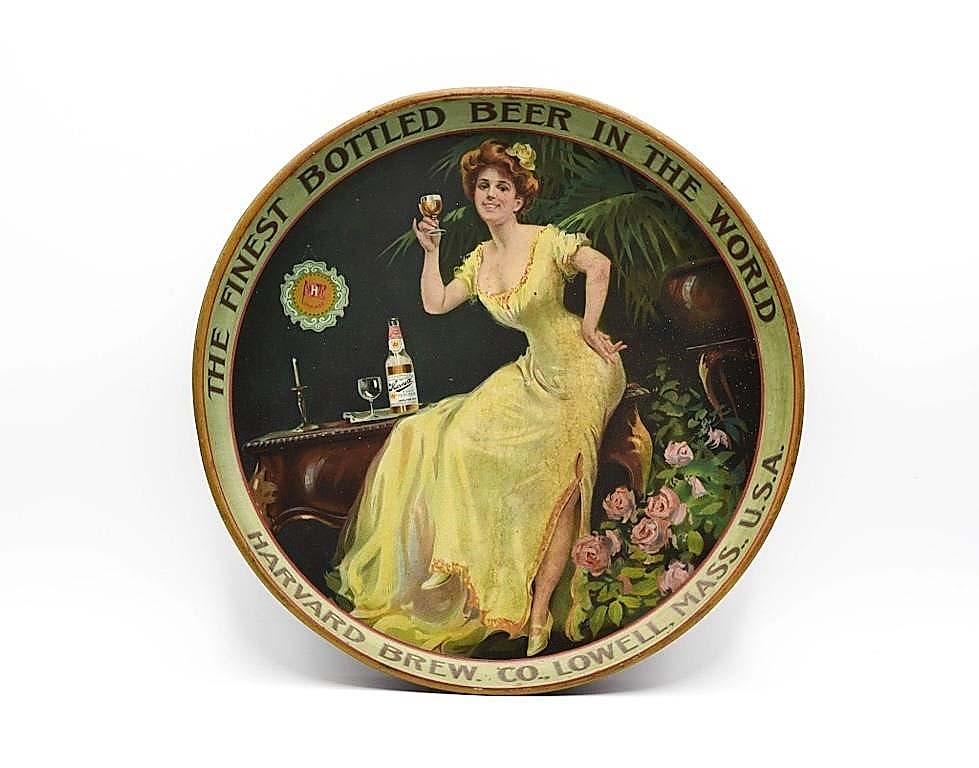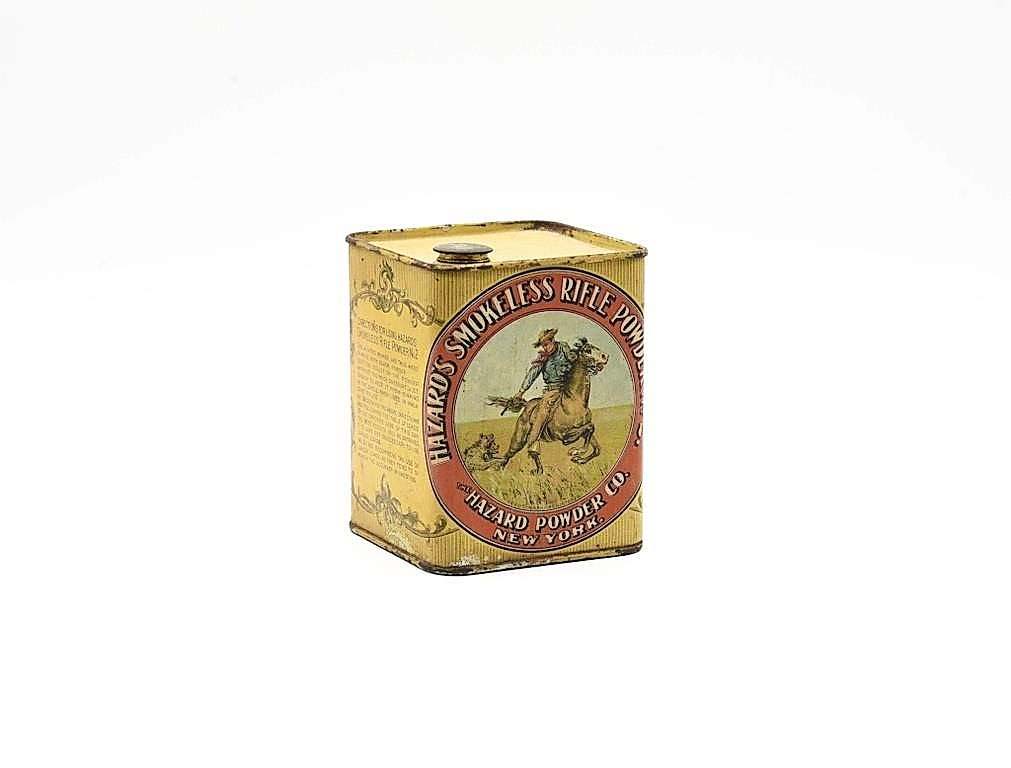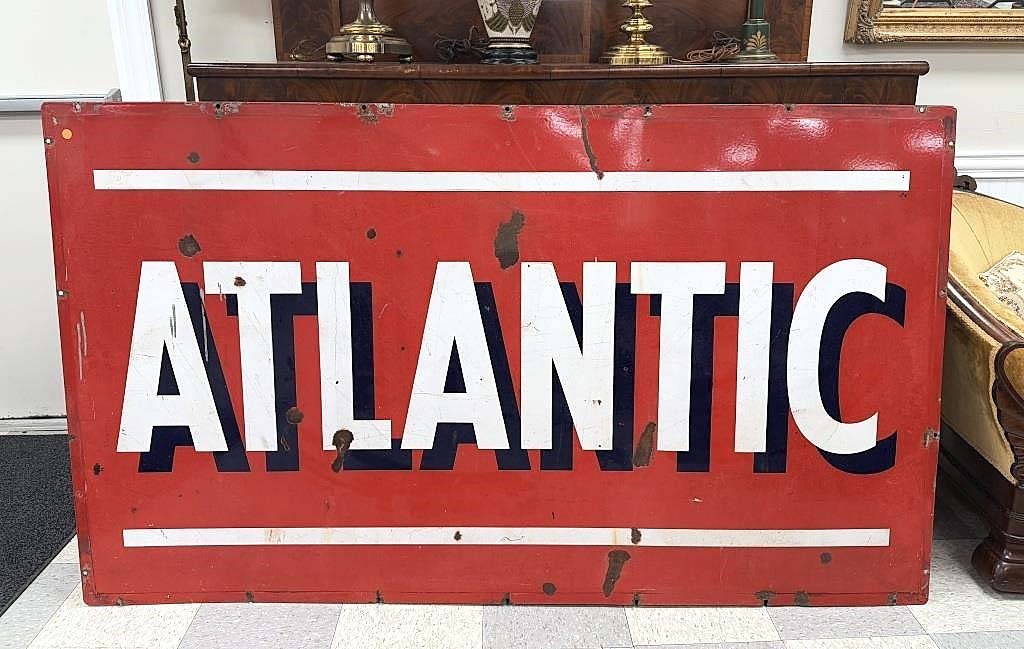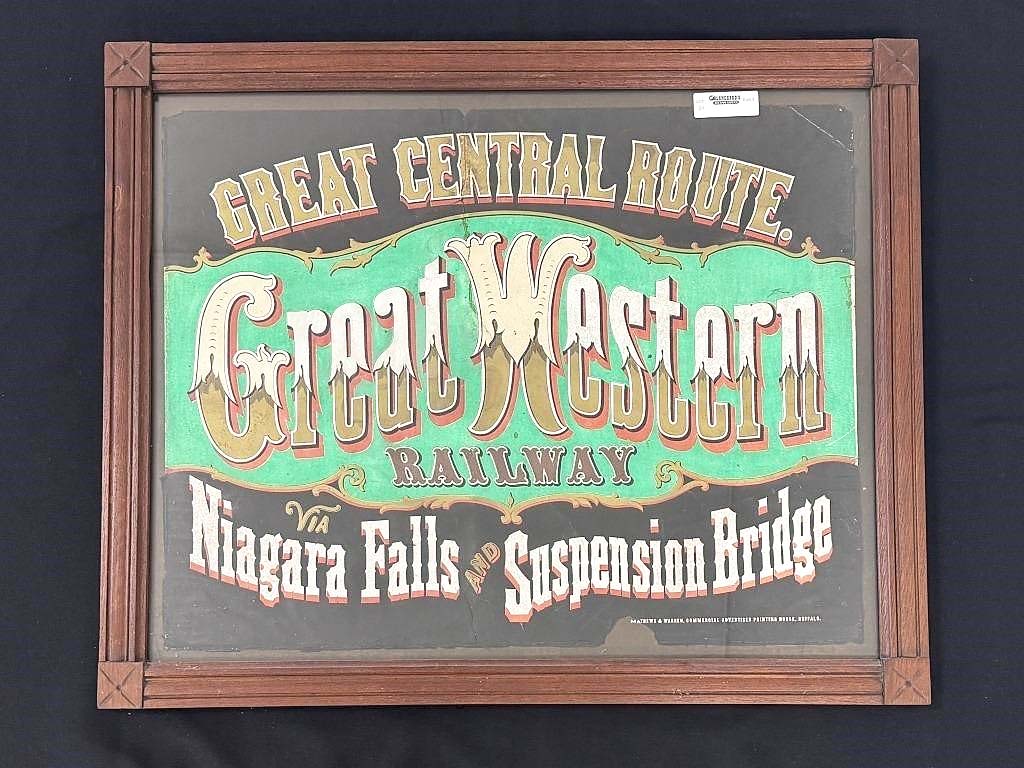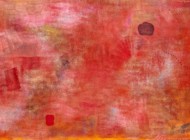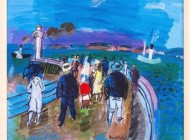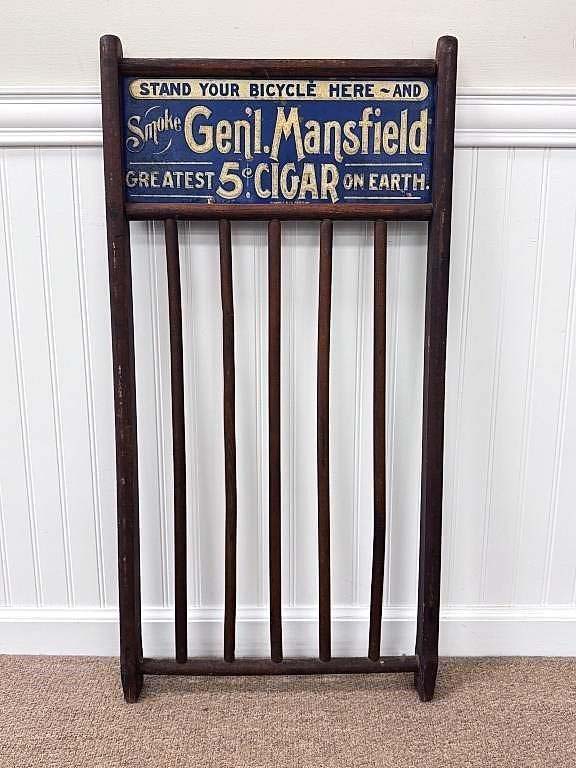
Parking at $2,818, the highest price of the sale, was this vintage wooden bicycle stand with a double-sided cigar advertisement for General Mansfield cigars attached to its top, 18¼ by 36½ inches.
Review by Kiersten Busch
POTSDAM, N.Y. — One June 15, Blanchard’s Auction Service conducted a 721-lot antique auction featuring an advertising collection, country and Dutch Marquetry furniture, clocks, Asian antiques, stoneware, tools, primitives and lighting. With only two lots passing, the sale boasted a 99 percent sell-through rate.
Leading the sale at $2,818 was a vintage wooden bicycle stand topped with a double-sided tin cigar advertisement. The advertisement read “Stand Your Bicycle Here and / Smoke Gen’l Mansfield / Greatest 5¢ Cigar on Earth.”
The bicycle stand came from a group of 121 lots of advertising — from tins to bottles to lithographs and everything in between. The remaining 120 lots ranged vastly in price from $6 for a lot of four advertising tins — including Imperial Granum Wheat Food, Almond Meal Compound, Sun Cured Japan Tea and Cresca Raisins — to $2,243 for a pre Prohibition-era tin beer tray advertising the Harvard Brew Company. The design on the latter included a woman in a yellow dress offering a toast; on the tray’s upper lip was the phrase “The Finest Bottled Beer in the World” and on its lower lip “Harvard Brew Co. Lowell, Mass. U.S.A.” was printed.
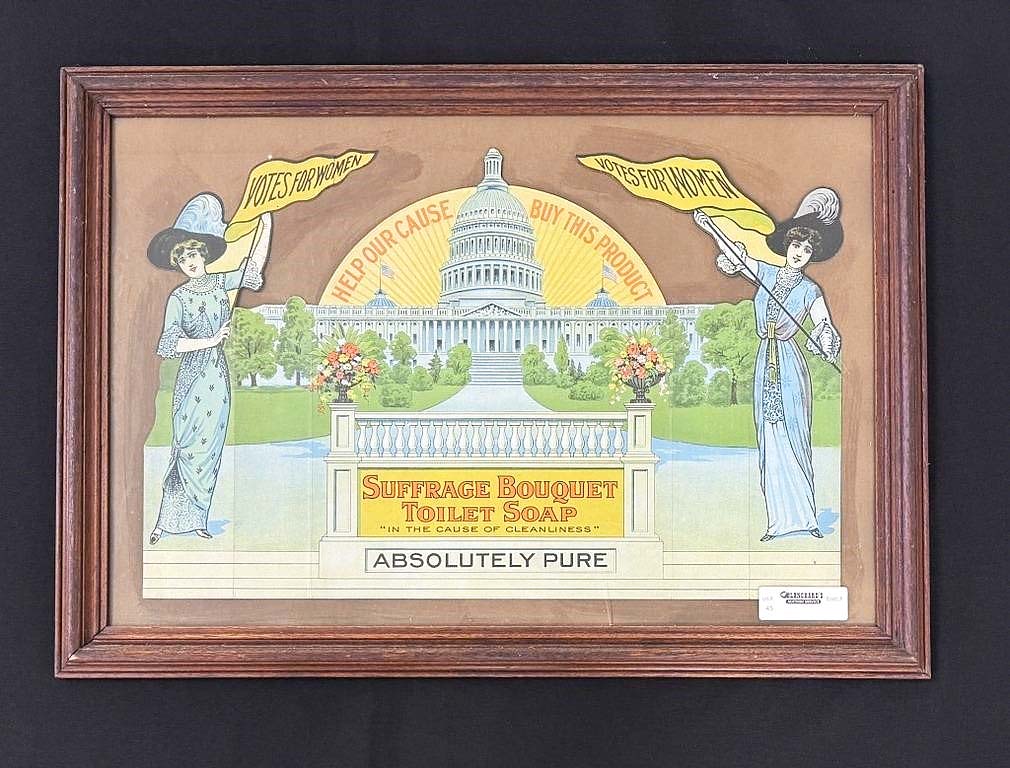
What screams “suffrage” more than toilet soap? This Suffrage Bouquet Toilet Soap large-framed die-cut advertising board, 19 by 26½ inches framed, earned a clean $1,208.
A framed die-cut advertising “Suffrage Bouquet Toilet Soap” earned a clean $1,208. Depicting two suffragettes waving flags in front of the US Capital building, the advertisement prompts “Help Our Cause / Buy This Product” and implied the purchase was “In the cause of cleanliness.”
A category that often intersects with advertisement, lithographs, was represented by 45 lots, led by a lithograph done for the Great Western Railroad housed in an Eastlake walnut frame. It advertised the “Great Central Route / via Niagara Falls and Suspension Bridge,” and was bid to $891. The suspension bridge in question was the world’s first, which, according to catalog notes, was “operational from 1855 to the late 1890s” and was “built by John Roebling who went on to build the Brooklyn Bridge.”
Four lots of Japanese woodblock prints traveled to new homes, including a lot of 16 framed prints of various Japanese landscapes ($173), a lot of two framed prints most likely featuring scholars or noblemen ($46), a lot of five unframed prints of animals, people and landscapes ($29) and a single print of a warrior ($12).
The second highest earning lot of the sale was a sterling silver Gorham flatware set. Weighing 78.34 troy ounces, excluding the knives, the set included 12 place settings; it set the table for $2,358. Two additional lots made of sterling silver crossed the block, including a pair of sculptures of big horn sheep ($546) and a lot consisting of several pieces of sterling and plated silver holloware ($316).
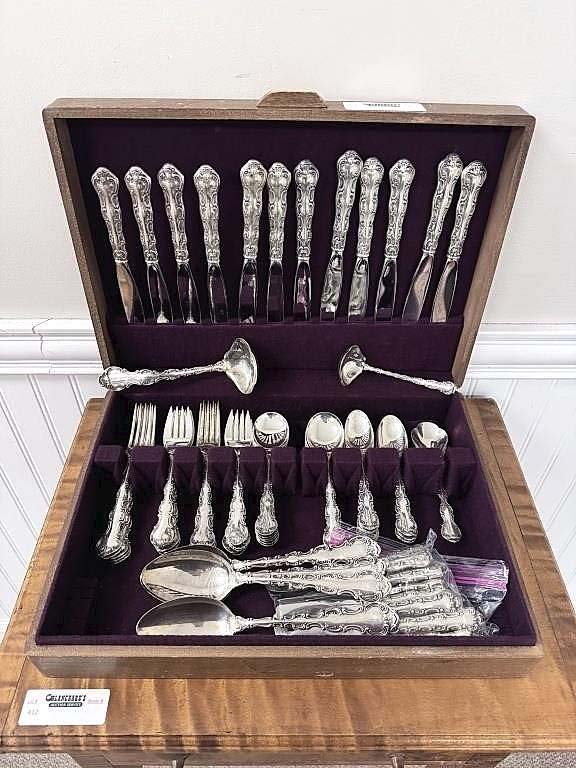
This sterling silver Gorham flatware set had 12 place settings and weighed 78.34 troy ounces, excluding its knives; it set the table for $2,358.
A quarter sawn oak stacking collector’s cabinet by Shaw Walker was the frontrunner for 175 lots of furniture, closing its 24 drawers for $891. The cabinet measured 42 inches wide and had white Formica fixed to its top. Only one lot out of the 175, a “parts” dresser with a New England highboy top and an early red painted ladderback armchair, did not sell.
Approximately 30 percent of the furniture, or 53 lots, was made up of country furniture, including a cherry two-part country corner cupboard ($546), a pine country harvest table ($431) and a nine-foot-long painted country waiting bench ($431).
If you needed something to put underneath all of that furniture, 21 lots of rugs were on offer, all finding new homes to decorate. Prices ranged from $40 for a room-sized hand-woven Oriental rug to $575 for a Tabriz wool room-sized rug. Only one carpet was not cataloged as Oriental: a country braided room-sized oval rug, which wove itself to $46.
Illuminating bidders’ interest was 24 lots of lighting, led by a slag glass panel lamp with a light-up base; it illuminated for $489. Out of the 12 lamps on offer, four more were also made of slag glass: another panel lamp, this one with a blue and white marbling ($403); a pair of small table lamps in green ($127), a white panel lamp with a base marked “MLCO 235” ($115) and a green hanging light shade ($46).
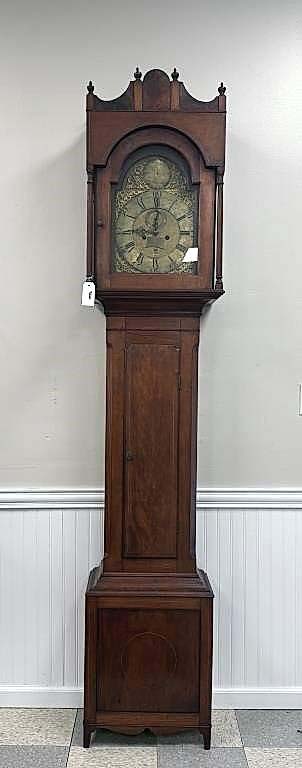
Ticking to $1,121 was this Philadelphia grandfather clock by William Houston (1730-1791), 92½ inches high, which had a No. 11 solid brass face and mahogany inlaid clock case with an incised eagle.
A Philadelphia grandfather clock by William Houston chimed for the highest price — $1,121 — of 17 lots of clocks. The clock’s solid brass face was marked “No. 11” and featured an incised eagle; the inlaid clock case was made from mahogany. Two other grandfather clocks sold: an Ithaca example with a cherry wood case ($150) and an example by Simon Willard from the early 1800s which had provenance to the estate of lifetime antique collector, county and town historian Carlton Stickney (Brookdale, N.Y.).
Prices quoted include buyer’s premium as reported by the auction house. For information, 315-265-5070 or www.blanchardsauctionservice.com.

